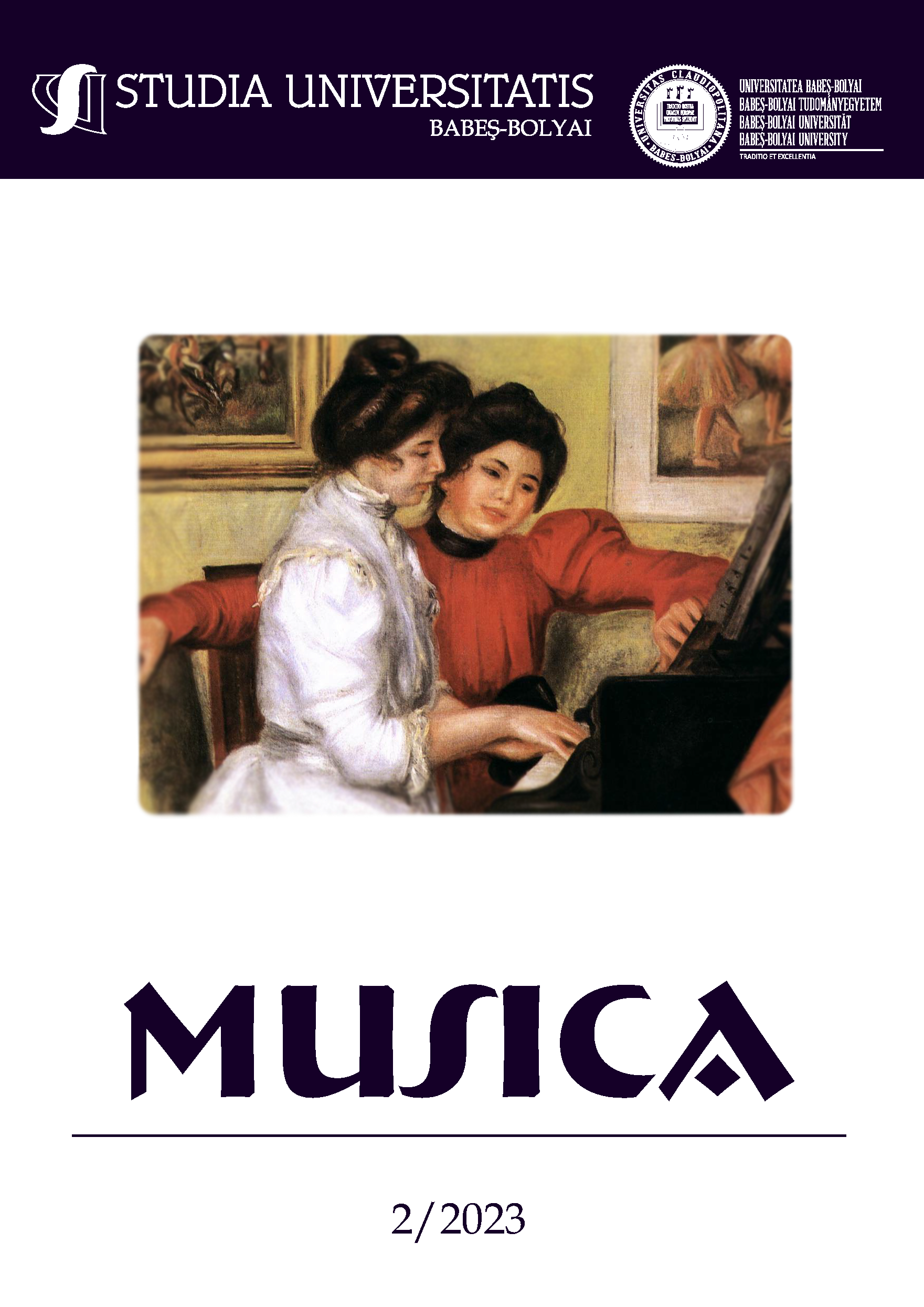Microanalysis of a Music Therapy Session Segment with An Autistic Child
DOI:
https://doi.org/10.24193/subbmusica.2023.2.10Keywords:
Music therapy, autism, communicative musicality, microanalysis, attunement, psychology.Abstract
The following microanalysis helps analyze an essential aspect of a music therapy session with a child diagnosed with autism. This detailed analysis highlights how essential music is in this little girl’s life, both in expression and communication. Microanalysis in music therapy aims to critically analyze the therapy process, focusing even on the smallest elements from a musical and therapeutic view. The music therapy sessions with this client and the analysis are based on the theory of communicative musicality developed by Trevarthen and Malloch. Just as Malloch argues that communicative musicality between mother and infant has three essential parts - pulse, timbre, and narrative - so it is observed that the analyses of the segments chosen were based on these principles. The narrative of the musical interaction between the client and therapist points to the fact that it expresses innate motives for sharing emotion and experience with other people and creating meaning in shared activity. It allows two people to share a sense of passing time and to create and share the emotional framework that evolves through this shared time.References
Bowlby, John. “The bowlby-ainsworth attachment theory.” In Behavioral and Brain Sciences 2, no. 4,1979.
Bronson, Christine Elisabeth. Making meaning with synesthesia: perception, aspiration, and Olivier Messiaen’s reality. MA Thesis, The Florida State University, 2013.
Bruscia, Kenneth E. Case studies in music therapy. Barcelona Publishers (NH), 2006.
Papadopoulos, Linda. Reporting in Counselling and Psychotherapy A Trainee’s Guide to Preparing Case Studies and Reports. Taylor & Francis e-Library, 2014.
Malloch, Stephen, and Colwyn Trevarthen. Communicative musicality exploring the basis of human companionship. Oxford University Press, 2009.
Malloch, Stephen. “Mothers and infants and communicative musicality”. In Musicae Scientiae, vol. 3, nr. 1., 1999.
Stern, Daniel. The interpersonal world of the infant: a view from psychoanalysis and developmental psychology. Routledge, 2018.
Stern, Daniel N. “Affect attunement”. In Frontiers of infant psychiatry. vol 2, 1985.
Hodges, A., Donald, “The child musician’s brain”, In McPherson, Gary E. The child as musician: a handbook of musical development. Oxford University Press, 2017.
Trevarthen, C. and Malloch, S. The Dance of Wellbeing: Defining the Musical Therapeutic Effect. Nordic Journal of Music Therapy [online]. 2000, 9 (2). 24 April 2023.
Wosch, Thomas, and Tony Wigram. Microanalysis in music therapy methods, techniques and applications for clinicians, researchers, educators and students. Jessica Kingsley Publishers, 2007.
Downloads
Published
How to Cite
Issue
Section
License
Copyright (c) 2023 Studia Universitatis Babeș-Bolyai Musica

This work is licensed under a Creative Commons Attribution-NonCommercial-NoDerivatives 4.0 International License.






